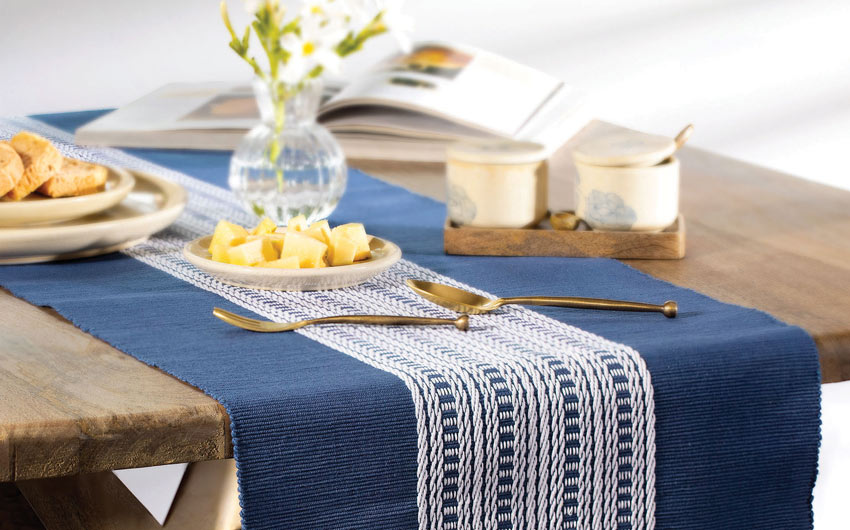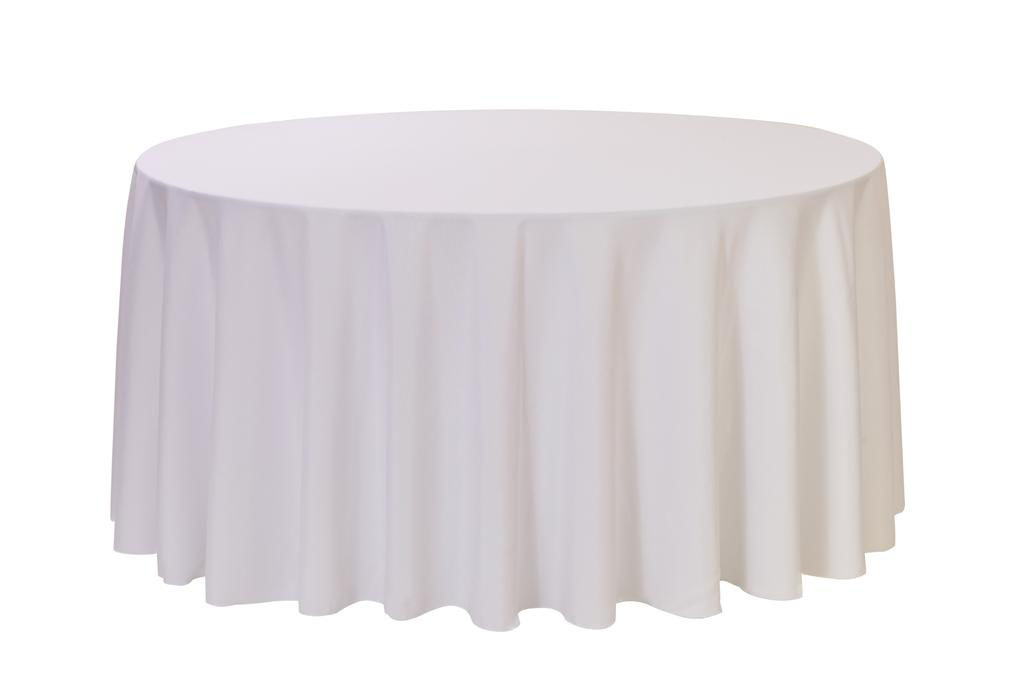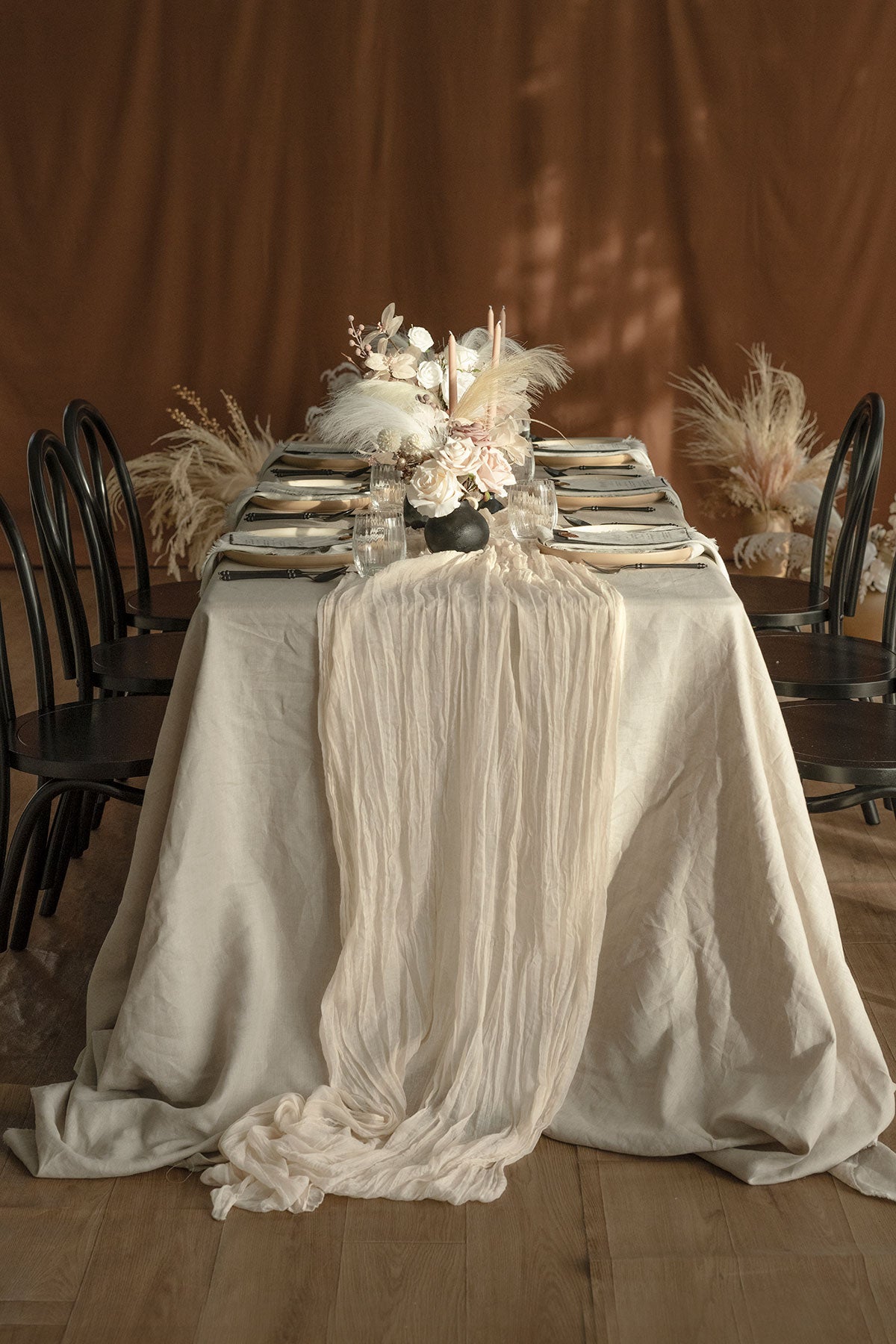Imaginative Table Runner Uses: Past the Table
Imaginative Table Runner Uses: Past the Table
Blog Article
Bed Linen Material Advancements: Exploring Modern Trends and Creative Applications in Design and Textile Market
From sustainable production techniques to sophisticated weaving technologies, the development of linen is improving the landscape of the fabric industry. As we dive into the realms of imaginative design applications and the development of linen blends and hybrid fabrics, a new chapter unravels in which bed linen's duty in future textile technologies takes center stage.
Sustainable Practices in Linen Manufacturing
Lasting techniques in bed linen production have actually become progressively critical in the textile sector's efforts to reduce environmental effect and promote honest sourcing techniques. Bed linen, a natural fiber originated from the flax plant, provides a variety of benefits such as breathability, toughness, and biodegradability. However, standard approaches of linen production can include considerable water consumption, pesticide use, and energy-intensive processes.
To attend to these challenges, several fabric manufacturers are taking on lasting methods throughout the bed linen manufacturing procedure. This includes sourcing flax from organic ranches that avoid hazardous pesticides and chemicals, implementing water-efficient retting methods to extract fibers from the flax stalks, and utilizing eco-friendly dyes and finishes. Furthermore, some firms are buying eco-friendly power sources to power their manufacturing centers and decreasing waste via recycling and upcycling initiatives.
Technological Advancements in Linen Weaving
With the growing focus on lasting methods in linen production, the fabric market is currently witnessing a rise in technological innovations specifically focused on changing the art of linen weaving. These developments are improving the means bed linen textiles are produced, using raised efficiency, high quality, and imagination in weaving techniques.
One of the key technological advancements in linen weaving is the integration of electronic looms. These innovative looms are furnished with software program that permits for detailed and intricate layouts to be woven with precision. By digitizing the weaving process, producers can accomplish greater consistency and accuracy in their bed linen textiles.
Additionally, innovations in thread spinning technology have actually made it possible for the manufacturing of finer and more resilient bed linen yarns - table cloths. This results in softer and smoother linen textiles that retain their high quality even after several usages and washes
Furthermore, the development of environmentally friendly dyeing procedures and coatings for linen fabrics is obtaining grip. These lasting techniques not just decrease the environmental influence however also accommodate the increasing customer demand for fairly generated fabrics.
Creative Layout Applications for Bed Linen
Ingenious imaginative approaches are significantly shaping the imaginative style applications for bed linen in the textile market. Bed linen's all-natural aesthetic charm and ability to mix with other textiles make it a favored selection for producing special garments and devices that provide to the eco aware customer.
Moreover, designers are exploring with linen in home decor, utilizing its durable and breathable nature to craft stylish furnishings such as curtains, bed linens, and furniture. The structure and drape of linen bring a feeling of class and convenience to interior spaces, adding a touch of elegance article to modern homes.

Linen Blends and Hybrid Fabrics

Crossbreed fabrics, on the other hand, take the concept of blending an action additionally by including added elements such as metallic strings, recycled products, or conductive fibers. These cutting-edge textiles not only broaden the design possibilities however likewise introduce useful elements like conductivity, antimicrobial properties, or improved sturdiness. Crossbreed materials are significantly being utilized in various sectors, consisting of fashion, interior layout, and technological textiles, where the need for multifunctional products is on the surge.
Bed linen's Function in Future Fabric Innovations

In the world of future textile advancements, linen is expected to be a principal in the advancement of innovative practical fabrics. Scientists and designers are discovering means to improve bed linen's intrinsic qualities via technological innovations, such as integrating clever fabrics, nanotechnology, and performance coatings. These technologies intend to raise bed linen's efficiency attributes, making it ideal for a broader array of applications, from activewear to safety clothes.
Moreover, the mix of bed linen with other all-natural or synthetic fibers opens up countless possibilities for producing unique fabrics with special properties and functionalities. By leveraging linen's qualities and exploring innovative blends, the textile market is poised to present interesting developments that satisfy evolving customer requirements and sustainability demands.
Conclusion
In verdict, the exploration of lasting techniques, technical developments, imaginative layout applications, linen blends, and its function in future textile developments highlight the continuous advancement of linen material in the modern-day layout and fabric sector. With a knockout post a concentrate on technology and imagination, the flexibility and green nature of bed linen visit this site make it a valuable material for producers and designers alike, paving the way for more growths and improvements in the field of textiles.
As we dig right into the realms of innovative design applications and the development of bed linen blends and hybrid textiles, a brand-new phase unravels in which bed linen's role in future textile advancements takes center phase.
Discovering the fusion of bed linen with other fabrics has led to the development of innovative blends and hybrid fabrics in the contemporary textile sector. Linen blends supply an one-of-a-kind combination of the features of bed linen with those of other fibers, resulting in materials that possess improved buildings such as enhanced sturdiness, improved draping, and minimized wrinkling.The development of linen blends and crossbreed materials has actually established the phase for Linen to play a critical role in driving future fabric developments.In the world of future textile innovations, bed linen is anticipated to be a key gamer in the advancement of sophisticated functional fabrics.
Report this page